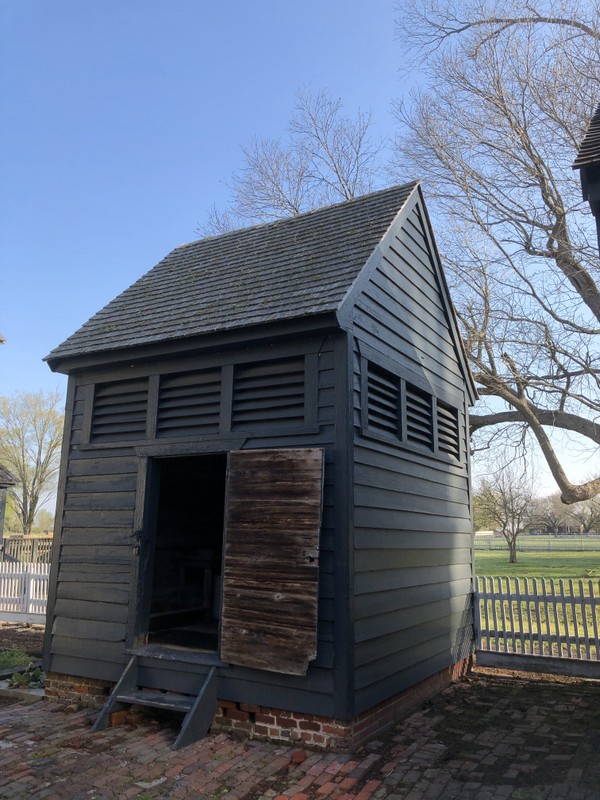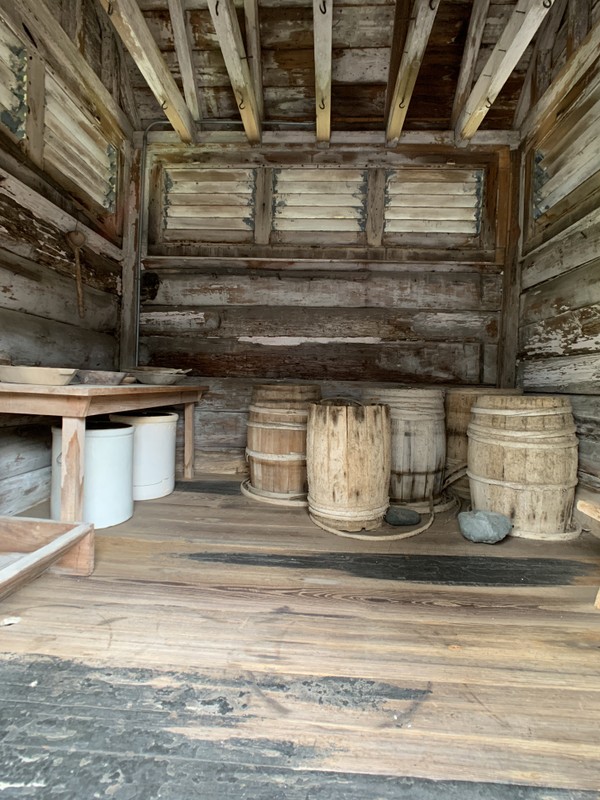Salting House
Introduction
Text-to-speech Audio
Preserving meat and fish during the 1840s required leaving it in barrels of salt for months. Then it could be air dried or smoked. The Salting House (c. 1830) housed the barrels of salted meat and fish. Slaughtering took place in December. The winter temperature was cool enough so that the meat could be safely cured without spoiling. Somerset Place has an unusually large number of domestic dependencies or household service buildings. These highly specialized structures functioned solely for the purpose of supplying goods and services to the Collins family. There were approximately 25 enslaved house servants on this plantation working in and around these buildings seven days per week.
Images
Salting House

Interior of the Salting House

Backstory and Context
Author-Uploaded Audio
Audio description of the Salting House by Historical Interpreter Noah Janis.
Text-to-speech Audio
Enslaved people killed around 200 hogs each December to provide a year’s supply of meat for everyone on the plantation. The original Salting House you see here is where they prepared and stored the high-quality cuts of meat for the Collins family and their guests. Having a separate building accommodated the relatively large volume of pork, fish, beef, and lamb that the family consumed, and louvers you see at the top of the structure kept the interior cool all year long.
Sources
Self-Guided Tour Brochure, Somerset Place State Historic Site.
Somerset Place State Historic Site
Somerset Place State Historic Site
